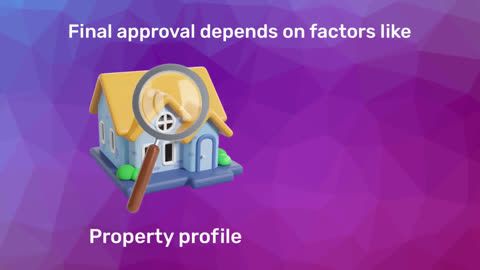Interest rates largely decide how expensive or affordable a loan becomes, and for Indian borrowers, the adoption of the External Benchmark Lending Rate (EBLR) has changed the way loans are priced. Since October 2019, the Reserve Bank of India (RBI) has required banks to link new floating-rate loans to external benchmarks, and today more than 90% of such loans are tied to EBLR.
For borrowers, this means that changes in RBI’s key rates directly influence EMIs. For example, if the RBI lowers the repo rate by 1%, the EMI on a Rs. 50 lakh home loan can fall by around Rs. 3,000 per month, leading to savings of more than Rs. 7 lakh in total interest. This blog will explain how EBLR works and why it matters.
EBLR full form and definition
EBLR stands for External Benchmark Lending Rate, a system that directly connects loan interest rates to benchmarks set by the Reserve Bank of India (RBI) or other approved financial bodies. It ensures that borrowers experience faster transmission of policy rate changes into their loan costs.
Before the shift to EBLR, banks relied on systems such as the Marginal Cost of Funds-Based Lending Rate (MCLR) and the Base Rate. These older frameworks often delayed the benefits of policy rate cuts from reaching customers. With EBLR, any movement in the benchmark rate is quickly reflected in loan interest rates, bringing more transparency, accountability, and fairness for borrowers.
Common external benchmarks used for EBLR
Banks in India can link their EBLR-based loans to the following benchmarks:
Repo rate – Rate at which RBI lends money to commercial banks
3-month treasury bill yield published by Financial Benchmarks India Pvt. Ltd. (FBIL)
6-month treasury bill yield published by FBIL
Any other benchmark published by FBIL
How does EBLR work?
Banks calculate lending rates under EBLR as:
EBLR = External Benchmark Rate + Spread + Credit Risk Premium
External benchmark rate: The base reference rate, such as the RBI’s repo rate or FBIL’s published benchmarks.
Spread: A fixed margin charged by banks to cover costs and maintain profitability.
Credit risk premium: An additional charge that reflects a borrower’s credit score, type of loan, and repayment record.
This structure ensures that when RBI revises its repo rate or other benchmarks, loan rates adjust accordingly, making EMIs either more affordable or more expensive.
Suppose a bank uses the repo rate as its external benchmark:
Repo rate = 5.50%
Bank’s spread = 2.0%
Credit risk premium = 0.5%
EBLR = 5.50% + 2.0% + 0.5% = 8.00% per annum
In this case, the borrower would pay an interest rate of 8.00% on the loan annually.
How does EBLR impact your loans?
The EBLR directly impacts how much interest you pay on your loans. Since EBLR is linked to an external benchmark like the repo rate, any change in this benchmark will lead to a change in your loan’s interest rate. This means that when the repo rate decreases, the EBLR also decreases, and your loan EMIs reduce. Conversely, if the repo rate increases, your loan EMIs will rise.
For instance, let’s say you have a home loan with an interest rate linked to EBLR. If the repo rate drops from 5.5% to 5.0%, your loan interest rate will also drop by 0.5%, helping you save on EMIs. Therefore, opting for an EBLR-linked home loan helps you stay aligned with market rates, ensuring you get the most competitive rates available.
If you are considering a home loan, choosing the right lender with competitive EBLR rates can make a significant difference to your monthly outgoings. Bajaj Finserv offers attractive rates starting from 7.45%* p.a with the transparency of EBLR-linked pricing. Check your eligibility for a home loan from Bajaj Finserv today. You may already be eligible, find out by entering your mobile number and OTP.
Example of EBLR
The impact of EBLR on home loan EMIs can be significant.
Scenario 1 – Higher repo rate
Loan amount: Rs. 50 lakh
Tenure: 20 years
Interest rate: 8.5% (EBLR-based)
EMI: Rs. 43,391 per month
Total interest: Rs. 54.1 lakh
Scenario 2 – Repo rate cut by RBI
New repo rate: 5.50%
Revised EBLR-based Interest: 7.49%
New EMI: Rs. 40,302 per month
Total Interest: Rs. 46.7 lakh
Impact: A 1% cut in EBLR reduces EMI by about Rs. 3,089 per month, saving Rs. 7.4 lakh in total interest over the loan tenure.






